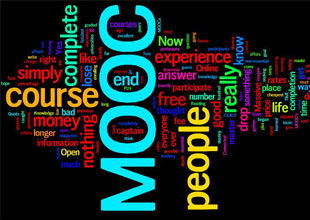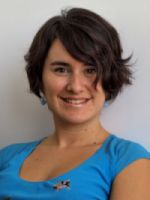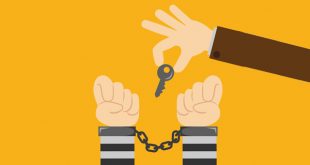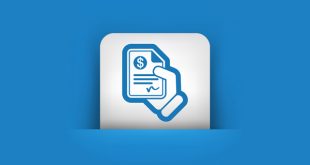 I finally finished my first MOOC (Massive Open Online Course). I must admit it was one of the BEST classes I have ever taken. The name of the course was Crash Course on Creativity taught by Tina Seelig, Executive Director of Stanford Technology Ventures Program . This was a well-organized fast paced course on creativity. The video lectures were super short – just a few minutes long – enough to inspire new ideas and introduce different ways of perceiving our surroundings. The readings were mainly from inGenius: A Crash Course on Creativity by Tina Seelig richly illustrated with corporate success stories, creativity misperceptions and observation lessons.
I finally finished my first MOOC (Massive Open Online Course). I must admit it was one of the BEST classes I have ever taken. The name of the course was Crash Course on Creativity taught by Tina Seelig, Executive Director of Stanford Technology Ventures Program . This was a well-organized fast paced course on creativity. The video lectures were super short – just a few minutes long – enough to inspire new ideas and introduce different ways of perceiving our surroundings. The readings were mainly from inGenius: A Crash Course on Creativity by Tina Seelig richly illustrated with corporate success stories, creativity misperceptions and observation lessons.
I have been away from school for the last 10 years. So this was a memory refresher for me yet the experience was completely fresh. Since online classroom experience was new to me, I took the time to read the forums, interact with other classmates and be active in team projects. As creativity is an interest to so many people with different professional and academic backgrounds, nationalities and ages, I got to meet people from all around the world with different perspectives.
Group projects were the most challenging and rewarding tasks. Working effectively as a group is a big challenge in any professional or academic environment. Think of it… With people you never met and with whom you will never work in the same room, it could very well be much harder. In our case, it was the opposite. I joined a great team by luck. I read the profile of the team members before joining. They were all technical people with solid backgrounds from all around the world. Our team members; a Danish professional who works as a Technical Sales Manager at the Silicon Valley, an Indian computer engineer who currently works at a project in Tanzania, a Turkish student who will be studying master’s programme of Financial Engineering in UCLA Los Angeles, an IT consultant from Germany, one college student from Santiago, Chile and one Mexican engineering student who works as a technician in his spare time… What a diverse group…
As I predicted, the team members had a very positive attitude towards the class, assignments and collaborating on different projects. We used our ethnic and professional diversity in order to create more value and helped each other to complement one another in different areas. Even our geographic locations helped us greatly. There were times our team worked 24 hours: while a few were sleeping, others worked on the project and vice versa… I was amazed by the flexibility, hard work and dedication of the team members!
As a group we had 3 projects: The first one was ‘the chewing gum project.’ Our task was to build something of value using mainly chewing gum. It was truly ironic on my part since it is forbidden to buy and sell chewing gum in Singapore!
On our first conference call, we had a wonderful introduction and brainstroming session where everyone talked about himself briefly and introduced his/her innovative ideas on what to build with chewing gum. As a philanthropic group, we wanted to come up with something that helped people in less developed countries. We came up with a band aid that sticks though a chewing gum and treats burns and cuts called Aduro-Aid.
On our second assignment we were asked to connect and combine two irrelevant items in order to create an invention with a brand new function. We used a knife and a clothespin in order to create a homemade wirestripper. You can watch our presentation on Youtube.
And the last team project was the most fun: We had to tackle a specific challenge concerning pets. We had to brainstorm and come up with 100 alternative solutions before we come up with the best possible one. Finally, we were required to prepare a compelling story on the best solution. Our proposed problem was ‘to choose the right pet for us.’ We came up with a pet matching website: petmatch.com .
Would I recommend this course?
Yes without any hesitation! The course helped me step out of my routine and look around me with different eyes. I started to observe more and try to approach everything from multiple angles. Instead of guessing the answer or assuming things, I first ASK. This is in fact the most important thing; I force myself to ask even when I think I know the answer.
How will I use this material?
On everyday life, dealing with personal and business matters, I will try to see different perspectives. Sometimes I don’t question problems in greater detail and stick to what’s on the surface. I will make sure to study things from different angles and pose the right questions to reach the truth. I will work hard to be creative: it might be intuitive to be creative for some people but for those who are traditionally trained; I need to reprogramme my mindset to be innovative on a daily basis.
by Ela Erozan Gürsel
 Ela Erozan Gürsel writes a weekly column named “Değişim Yelpazesi ” on global business trends for Dünya Gazetesi on behalf of Datassist for almost two years. Her feature topics include: green energy; climate change; impacts of financial crisis on companies, sectors and regions; innovative technologies in sciences, human resources and management; social networks transforming business and politics; changing dynamics of marketing and branding.
Ela Erozan Gürsel writes a weekly column named “Değişim Yelpazesi ” on global business trends for Dünya Gazetesi on behalf of Datassist for almost two years. Her feature topics include: green energy; climate change; impacts of financial crisis on companies, sectors and regions; innovative technologies in sciences, human resources and management; social networks transforming business and politics; changing dynamics of marketing and branding.
She also writes articles for international magazines published in Singapore.
Prior to her writing career, she worked at Datassist as a Project Manager in a project that combines human resources and mobile communications with the aim to connect blue-collar workers and employers through mobile phones. Before engaging in this exciting project, she was in pharmaceutical sales working for a multinational company. She graduated from American University, Washington, DC, majoring in International Studies with a concentration on International Business and Europe. She worked in Washington D.C. as an Account Manager at a boutique telemarketing firm that specializes in fund raising and publication renewals. She speaks Turkish, English, French, and Spanish. She currently resides in Singapore with her husband.
All these projects are inspiring for artists, students and general public, who would like to be proud of the richness of the Turkish culture. For these cultural projects to last and prosper, museums need to be financially supported by the government agencies, private sector and international foundations. I hope Baksı Museum will keep up its creative projects with the help of professionals’ efforts and get the attention of potential sponsors in order to further contribute to the local economy and art.
 Turkish Labor Law
Turkish Labor Law



